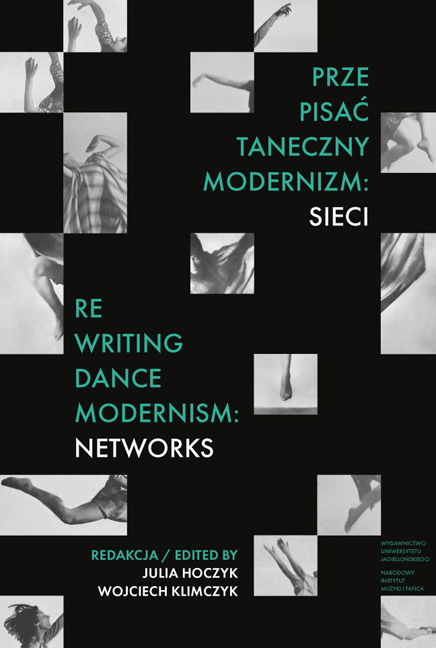Book contents
- Frontmatter
- Contents
- Prze-pisać taneczny modernizm: sieci
- Metodologie: usieciowianie tanecznego modernizmu
- Transmisje: transnarodowe trajektorie tanecznego modernizmu
- Poszerzenia: taneczny modernizm w słowiańskiej Europie Środkowej
- Methodologies: Networking Dance Modernism
- Transmissions: Transnational Trajectories of Dance Modernism
- Expansions: Dance Modernism in Slavic Central Europe
- Biogramy autorów
- Authors’ Biographies
- Indeks / Index
- Miscellaneous Endmatter
- Miscellaneous Endmatter
On the Way to ‘Asia’: Exoticism, Itinerancy and Self-Fashioning in the Making of Central European Modern Dance
Published online by Cambridge University Press: 01 March 2024
- Frontmatter
- Contents
- Prze-pisać taneczny modernizm: sieci
- Metodologie: usieciowianie tanecznego modernizmu
- Transmisje: transnarodowe trajektorie tanecznego modernizmu
- Poszerzenia: taneczny modernizm w słowiańskiej Europie Środkowej
- Methodologies: Networking Dance Modernism
- Transmissions: Transnational Trajectories of Dance Modernism
- Expansions: Dance Modernism in Slavic Central Europe
- Biogramy autorów
- Authors’ Biographies
- Indeks / Index
- Miscellaneous Endmatter
- Miscellaneous Endmatter
Summary
Inter-war Europe, the time and place for the emergence and crystallization of modern dance, was also the penultimate phase of imperialism. This was a period when colonized people around the world were coming to Europe while imagining what would become of the “new states” established after World Word II, playing roles in anti-colonial movements even while pursuing education in a European mode and avidly consuming the products of European modernity – films, recorded music, fashion, food, and lifestyles. At the same time that Europeans began taking a serious interest in Asian traditions of dance – studying and filming them; writing about them; collecting artefacts and creating exhibitions; even undertaking practical studies and performing their interpretations publically – Asian practitioners were busy reformulating inherited dance traditions for the modern world and creating new dances that were aimed to appeal to cosmopolitans in Asia and internationally.
Dance in this time of exchange and flow was a privileged space for self-fashioning, playing with multiple identities, communicating about and through alterity and exploring novel modes of sociation and itinerancy. A new era in dance starts, I have argued, with Margaretha Zelle, who in 1906 drew on her experience of living in the Dutch East Indies as a housewife married to a Dutch army officer, connections to European artistic elites such as the museum owner and industrialist Émile Guimet, a knack for storytelling and theatricality and a willingness (indeed eagerness) to disrobe in public to transform herself into Mata Hari, the “Indian” temple dancer.1 For Zelle, Mata Hari was not just a stage persona, but a way of being in the world – or, better, a way of transversing multiple worlds. She performed as Mata Hari when interacting with the press and the general public; engaging in relations with men who were her patrons, artistic collaborators and sexual partners; communicating authoritatively about Asian art and religion; and negotiating professional relations with institutions and agents.
In the years to come, stages in Europe would see Uday Shankar, who trained as a painter in London at the Royal College of Art, becoming the foremost proponent of Indian dance through colorful and lively works created together with a series of European female partners – the Russian ballerina Anna Pavlova, the French pianist Simone Barbiere and Swiss sculptor Alice Boner.
- Type
- Chapter
- Information
- Re-writing Dance Modernism: Networks , pp. 447 - 468Publisher: Jagiellonian University PressPrint publication year: 2023



